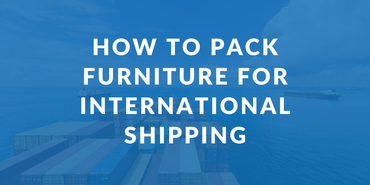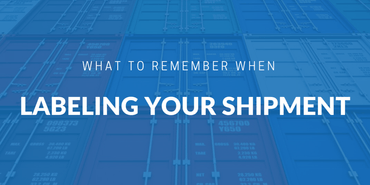
Euro Pallet (EPAL): Sizes and Specifications



![]()
Pallets are essential packaging materials in modern logistics, a platform fixed to a superstructure and a bottom deck.
They allow lift tracks and conveyors to lift and move goods as well as to be placed in specific transport vehicles and storage systems. Pallets come in handy in assembly, storage, handling, and transportation of goods. They also protect the goods from damage.
Shipping pallets usually differ from country to country. But in this article, we’re going to discuss the most commonly used shipping pallets in Europe: Euro Pallet (EPAL).
What are European Pallets
Euro pallets are the standard pallet used in various high rack systems, trucks, and warehouses all around Europe. Also, companies exporting their goods to the continent usually pack their products on EPAL Euro pallets.
These are so popular in Europe because of their strength, reliability, the possibility to be used multiple times, and convenient dimensions. They feature a box on top, which is constructed to hold products in place.
All Euro pallets contain the EUR logo, which shows that they’re the official pallet. But sometimes you can find them with other abbreviations such as DB and EPAL.
Although sometimes, there are fake pallets that contain the EUR logo without the surrounding ring. They can easily be recognized because the thickness of their wooden planks measures 1 cm instead of 2 cm.
What are the dimensions of a Euro Pallet?
A Euro pallet measures 1200mm by 800mm by 144mm. It’s important for people who plan to export goods to Europe to take note of this measurement, so they can avoid overloading or underloading the pallet business. The common EUR–pallet dimensions include:
| EUR-PALLET TYPE | DIMENSION(WXL) CENTIMETERS | DIMENSION(WXL) INCHES | ISO PALLET ALTERNATIVE |
|---|---|---|---|
| EUR, EUR 1 | 80 x 120 | 31.50 x 47.24 | ISO1, same size as EUR |
| EUR 2 | 120 x 100 | 47.24 x 39.7 | ISO 2 |
| EUR 3 | 120 x 100 | 39.37 x 47.24 | |
| EUR 6 | 80 x 60 | 31.50 x 23.62 | ISO0, half the size of EUR |
Materials used for Euro Pallets
Euro pallets are constructed from a wide variety of materials, including wood, plastic as well as steel. However, the most common material is wood. Approved types of wood include:
- Coniferous (fir, pine, spruce)
- Softwood (alder, birch)
- Hardwood (ash, acacia, oak, maple, sycamore, European chestnut)
Wood pallets offer a great blend of weight, durability, and cost. Furthermore, there are a lot of pallets recycling infrastructure, which helps to promote the refurbishment and reuse of wood pallets. This are also highly reparable if damaged.
Other benefits of using wood for constructing pallets include: Non-slip property, absence of electrostatic, and can withstand high temperatures where material like plastic cannot.
However, there’s a downside to using timber. Manufacturers of wood pallets have to treat the wood when shipping international (ISPAM -15 standards). This material also has to be dried to 22% or 16% moisture content to prevent mold from developing.
After wood, plastic is the second most common material used. Plastic pallets contain several benefits, including durability, high-performance design, lightweight, fire-retardant, and suitable for export.
Unlike wood euro-pallet, plastic euro pallets don’t have to meet ISPM 15 standards. As such, they’ve become so popular for the export of goods. However, wood is cheaper and remains the standard material.
Regulations for approve Euro pallets
Euro pallets are manufactured according to strict quality regulation and are occasionally inspected by independent firms. All pallets should meet certain criteria before being approved.
The absence of an approval logo indicates a counterfeit pallet, which can cause damage to the product transported or handled by it. Transporting products on an unauthentic pallet can lead to refusal of products by customers or sometimes serious penalties from authorities. Other requirements include:
- Materials: 11 tables in high-quality wood, 9 solid woodblock, and 78 nails.
- Euro pallet Dimensions: Length 1200 mmm (tolerance limit + 8/-5); Width 800mm (tolerance limit + 8/- 5x mm); Height 144mm (tolerance limit + 10/ - 0x mm).
- Weight: approximately 25kg.
- Workload: 1500kg with a constant load on the entire pallet.
- Width of the board: Top board should have a width of 22 by 25 mm, while the bottom board should have a width of 22 to 24 mm.
- Only approved companies should manufacture, mark, and repair Euro pallets.
- Manufacturing shall take place following UIC Code 435-2 standards and repairs following UIC Code 435-4 standards.
- Euro pallet should contain the EPAL, EUR, or DB markings. In other cases, the mark of the European railway companies can replace the EPAL.
- All wooden pallets shall be marked with the ISPM NO-5 standards.
Related Articles


